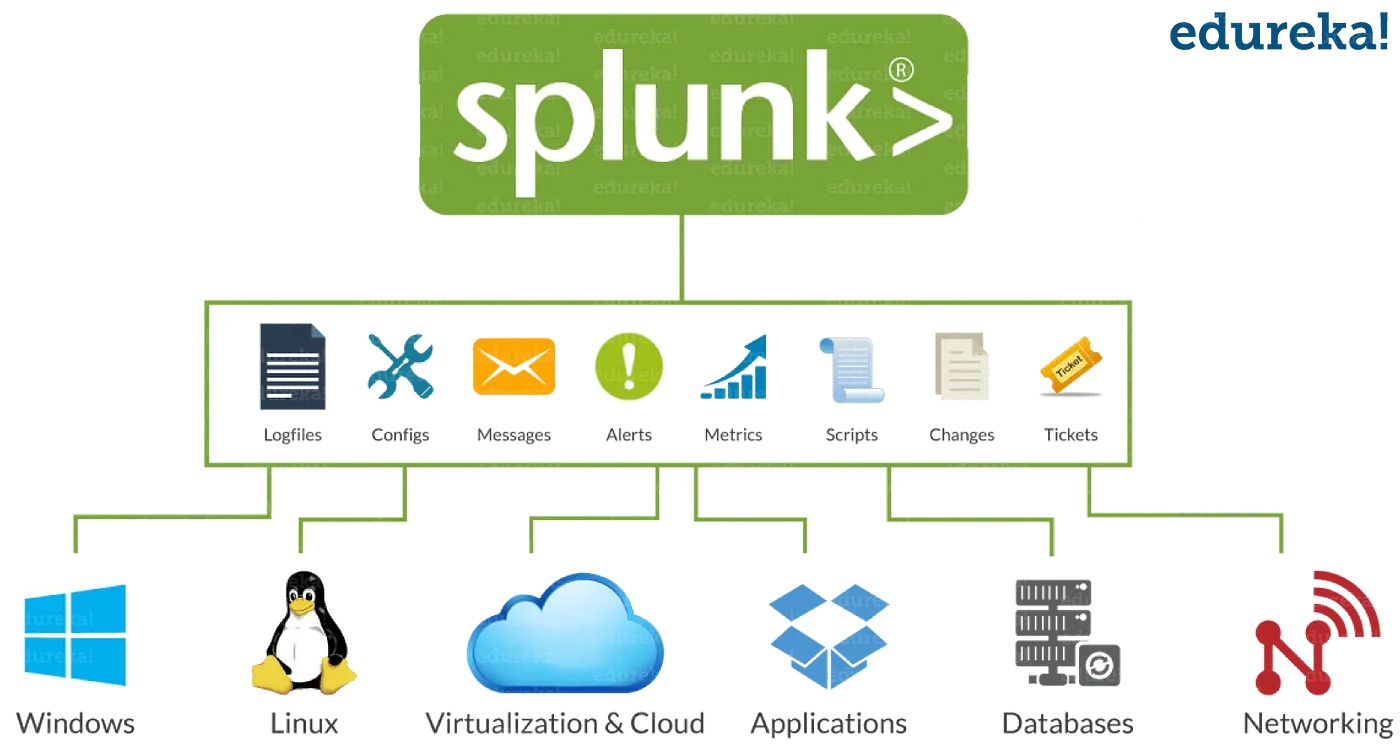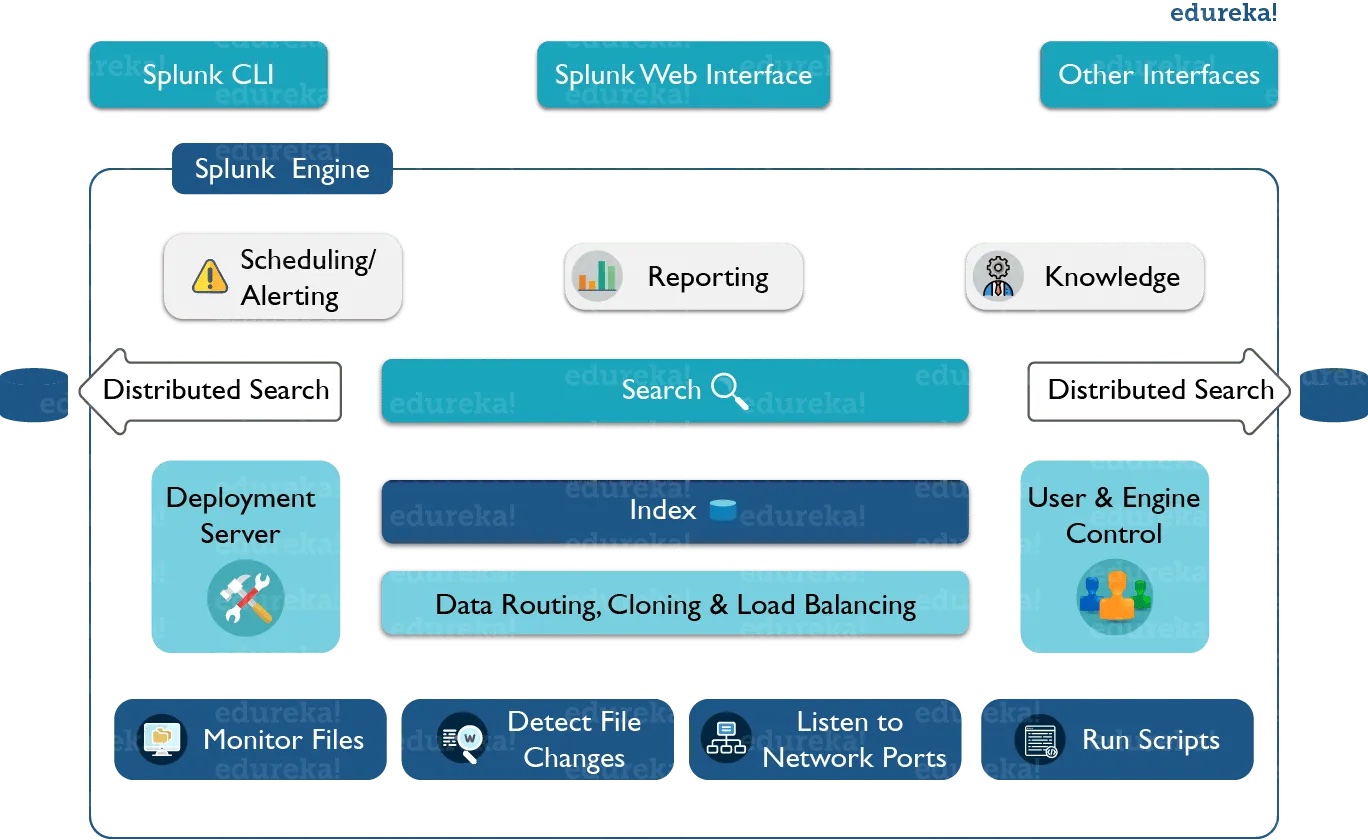Splunk

Introduction
Splunk is a software platform that allows users to search, analyze, and visualize machine-generated data. It is used by businesses, organizations, and individuals to manage and monitor data from various sources such as servers, applications, and networks. In this blog post, we will discuss the installation and usage of Splunk, and how it can help you gain valuable insights from your data.
Splunk Architecture
Splunk is a distributed system that consists of multiple components. The following diagram shows the architecture of Splunk:

Usage
Once Splunk is installed, you can start using it to manage and monitor your data. Here are some of the key features and capabilities of Splunk:
Data Ingestion
Splunk provides a wide range of options for ingesting data from various sources such as log files, databases, and APIs. It also supports real-time data ingestion, which means that you can monitor and analyze data as it is generated. This makes it easier to detect and respond to issues in real-time.
Search and Analysis
Splunk provides a powerful search and analysis engine that allows you to quickly search and analyze large volumes of data. You can use the search language to perform complex queries and filter results based on various criteria. This makes it easier to identify patterns and trends in your data, and to gain insights that might have otherwise gone unnoticed.
Visualization
Splunk provides a variety of visualization options to help you understand and analyze your data. You can create charts, graphs, and tables to display your data in a way that is easy to understand. This makes it easier to communicate your findings to others and to make data-driven decisions.
Application of Splunk
1. IT Operations
One of the primary applications of Splunk is in IT operations. In today’s digital world, every business relies on technology to function efficiently. But with technology comes the risk of system failures, network outages, and security breaches. Splunk helps IT teams to monitor and analyze their systems’ performance, identify issues, and troubleshoot them in real-time. This helps organizations to ensure that their systems are always up and running, minimizing the risk of downtime and disruption.
2. Security
Data security is a top priority for every organization. With the increasing number of cyber threats, it has become crucial for organizations to have a robust security system in place. Splunk helps organizations to monitor their network traffic and identify potential security threats in real-time. It also enables security teams to investigate security incidents and respond to them quickly, minimizing the risk of data breaches and other security incidents.
3. Business Analytics
Splunk is not just limited to IT operations and security; it can also be used for business analytics. By collecting and analyzing data from various sources, organizations can gain valuable insights into their customers, market trends, and business operations. This enables organizations to make better decisions, improve their operations, and enhance their customer experience.
Conclusion
Splunk is a powerful platform for managing and monitoring machine-generated data. Its installation process is simple, and it provides a user-friendly interface for managing and analyzing data. With its powerful search and analysis engine and visualization capabilities, Splunk can help you gain valuable insights from your data. Whether you are a business owner, IT professional, or data analyst, Splunk is a tool that can help you make the most of your data.
Reference
https://www.splunk.comhttps://www.tutorialspoint.com/splunk/index.htmhttps://www.guru99.com/splunk-tutorial.htmlhttps://medium.com/edureka/splunk-tutorial-3e1b5a22e6fe